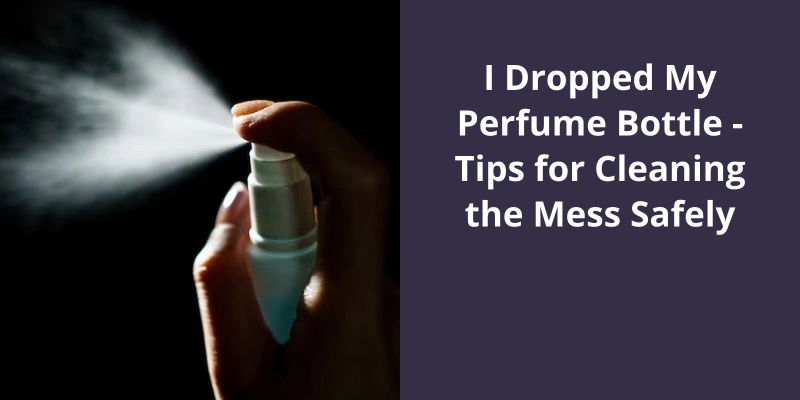Melt and pour soap making has become increasingly popular in recent years, as it allows for a hands-on, creative approach to crafting personal care products. However, many individuals are seeking alternatives to traditional melt and pour soap bases that contain propylene glycol, which can cause skin irritation for some. Fortunately, it’s possible to create high-quality melt and pour soap without the use of propylene glycol. In fact, glycerine remains a popular humectant for melt and pour soap bases, providing moisturizing benefits for the skin. Additionally, Sorbitol is a commonly used humectant that helps to enhance the melting process, allowing for an even smoother and easier crafting experience.

What Can I Add to Melt and Pour Soap for More Lather?
Another option to increase lather in melt and pour soap is to use coconut oil. Coconut oil is a natural foaming agent that creates a rich and creamy lather in soap. However, be aware that using too much coconut oil can cause the soap to become too soft and dissolve quickly.
Honey contains natural enzymes that can create a thick and creamy lather in soap. You can add 1-2 tablespoons of honey per pound of melt and pour soap. However, be aware that adding too much honey can cause the soap to become too soft and sticky.
Aloe vera gel contains natural enzymes and moisturizing properties that can help create a thick and creamy lather in soap. You can add 1-2 tablespoons of aloe vera gel per pound of melt and pour soap. However, be aware that adding too much aloe vera gel can cause the soap to become too soft and difficult to handle.
Some of the most popular options include glycerin, coconut oil, honey, stearic acid, and aloe vera gel. It’s important to experiment with different ingredients and find the right balance to create the perfect lather for your soap. Additionally, it’s important to remember that adding too much of any ingredient can have negative effects on the quality of the soap and it’s lather.
How to Properly Measure and Mix Ingredients for Melt and Pour Soap
- Choose a recipe that suits your needs and measure out all the ingredients.
- Melt the soap base in a double boiler or microwave-safe container in 10-second intervals, stirring in between to avoid burning.
- Once melted, add any additional ingredients such as fragrance or colorants and stir well.
- Pour the mixture into your soap molds and let it cool for at least 2 hours or until fully hardened.
- Remove the soap from the molds and package for use or gifting!
In recent years, however, soap makers have become more progressive in seeking alternative ingredients to propylene glycol. This is mainly due to some concerns that the chemical may cause irritation or allergies to the skin. So, what’re some substitutes for propylene glycol in soap making that can work just as well? Let’s find out.
What Is a Substitute for Propylene Glycol in Soap Making?
It’s non-toxic and is derived from natural sources such as vegetable oil or animal fat. However, glycerin tends to make soap soft and slimy, especially in humid conditions. As a result, it isn’t recommended to use it as the sole substitute for propylene glycol in soap making.
Another popular substitute for propylene glycol is vegetable glycerin. Vegetable glycerin is one of the easiest propylene glycol alternatives to use in soap-making, as it can be mixed directly into the soap base before pouring it into molds.
Coconut milk is rich in fatty acids that help to nourish and moisturize the skin. It also contains vitamins and minerals that make it a useful ingredient in soap. The high-fat content makes coconut milk an excellent lathering agent, so it can be used to create fluffy, decadent soap bars.
Lastly, Emulsifying wax can be used as a substitute for propylene glycol in soap making. Emulsifying wax is a plant-based wax derived from fatty acids and alcohols.
However, there are several natural substitutes that can be used instead, including glycerin, vegetable glycerin, aloe vera gel, coconut milk, and emulsifying wax. By using these alternatives, you can create high-quality soap bars that are free of harmful chemicals and gentle on the skin. It’s crucial to experiment with each ingredient to find the right balance that will produce the desired results.
Now that we know the basics behind the melt and pour soap base, it’s time to dive deeper into the various ingredients used in this preparation. From the different types of fats to the importance of glycerin, we’ll explore what goes into this popular soap making method.
What Is Melt and Pour Soap Base Made Of?
Melt and pour soap base is unique in that it skips the saponification process, making it simple for anyone to create custom soaps without any specific knowledge about soap making. The soap base is pre-made and available in a variety of colors, fragrances, and textures, so that you can create your own soap designs with ease.
One of the best aspects of using melt and pour soap base is the safety factor. The saponification process requires the use of strong and potentially dangerous chemicals like lye, which can be harmful if not handled correctly. However, melt and pour soap base is already pre-made with the lye and other dangerous substances removed, making it much easier and safer to use than traditional soap making methods.
Once the soap cools and hardens, it’s ready to use or be packaged as gifts for loved ones.
With it’s natural ingredients, the base is both gentle on the skin and easy to customize with a variety of colors, fragrances, and textures. And, best of all, it’s a safe and simple way to create beautiful and unique soaps that you can use or give as gifts to friends and family.
How to Choose the Right Melt and Pour Soap Base for Your Project
To choose the right melt and pour soap base for your project, consider the desired qualities of the finished soap, such as scent, color, opacity, and lather. Look for bases made with high-quality ingredients and avoid those with harsh chemicals. Additionally, consider the level of expertise needed to work with each type of base, as some may be more challenging than others.
Propylene glycol is a versatile and widely-used chemical compound that finds application in various industries. From pharmaceuticals to food and beverage to automotive, propylene glycol acts as a vital ingredient to enhance product properties. In this article, we shall discuss the different functions of propylene glycol in detail.
What Is the Function of Propylene Glycol?
One of the main functions of propylene glycol is in the cosmetics industry. It’s used as a humectant, which means that it’s role is to attract and retain moisture in products like moisturizers, shampoos, and conditioners. By holding onto moisture, propylene glycol helps to keep these products fresh, and ensures that they remain effective for longer periods of time.
It helps to improve the stability and efficacy of drugs by delivering them to specific parts of the body in a controlled manner. It’s use in this industry is also strictly regulated to ensure that it’s safe for patients.
It’s ability to dissolve grease and oil make it an effective choice for removing stubborn stains and buildup. It’s also commonly used in the production of paints and coatings, as well as inks and dyes, due to it’s excellent solubility properties.
Not only does adding herbs and oils to your melt-and-pour soap bases create a unique and personalized product, it also adds potential health benefits. However, it can be tricky to determine which herbs work best in soap and how much to add without compromising the soap’s texture and stability. In this article, we will discuss everything you need to know about adding dried herbs to your melt-and-pour soap bases, including which herbs to use and how much to add to your soap recipe.
Can You Add Dried Herbs to Melt and Pour Soap?
Adding dried herbs to melt-and-pour soap bases is a wonderful way to enhance the natural benefits of herbal extracts. Herbs like lavender, chamomile, and calendula are gentle and calming on the skin, making them perfect for use in bath and beauty products.
Fine herbs are also easier to mix evenly throughout your soap base, providing a consistent appearance and fragrance. One way to achieve finely-honed herbs is by using a clean coffee grinder or spice mill to pulverize them.
Once your herbs are sufficiently processed, sprinkle them into your melted soap base while stirring gently. It’s best to add the herbs gradually, starting small and adding more if the desired effect isn’t achieved. Keep in mind that some herbs may discolor your soap, so make sure to test your recipe beforehand to ensure the desired visual effect.
Herbal extracts are naturally loaded with antioxidants, vitamins, and other beneficial compounds that can help promote healthy skin. Herbs like chamomile and calendula are known for their soothing and anti-inflammatory properties, which can help calm irritated skin and reduce redness.
Fine-milled herbs can add a lovely aroma and aesthetic appearance, while also providing added skin benefits. As always, when experimenting with new ingredients, take the time to test your recipe and be aware of any potential risks or sensitivities. With a little practice and experimentation, you can create beautiful, all-natural soaps that are sure to impress.
How to Add Essential Oils to Melt and Pour Soap With Dried Herbs
One way to add essential oils to melt and pour soap with dried herbs is to melt the soap base, mix in the herbs, and then add small amounts of the essential oils while stirring gently. It’s important to mix the oils in slowly and avoid over-stirring to prevent separation and loss of fragrance.
Source: How to Make Easy Herbal Soap – Pinetree Garden Seeds
Conclusion
With the growing demand for natural and eco-friendly products, eliminating certain chemicals like propylene glycol can offer consumers a more sustainable and desirable option. Experimenting with different ingredients and finding substitutes can lead to a more versatile and customizable product line for soap makers while also promoting a healthier and safer alternative for consumers.





